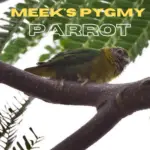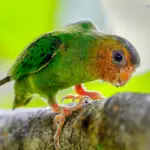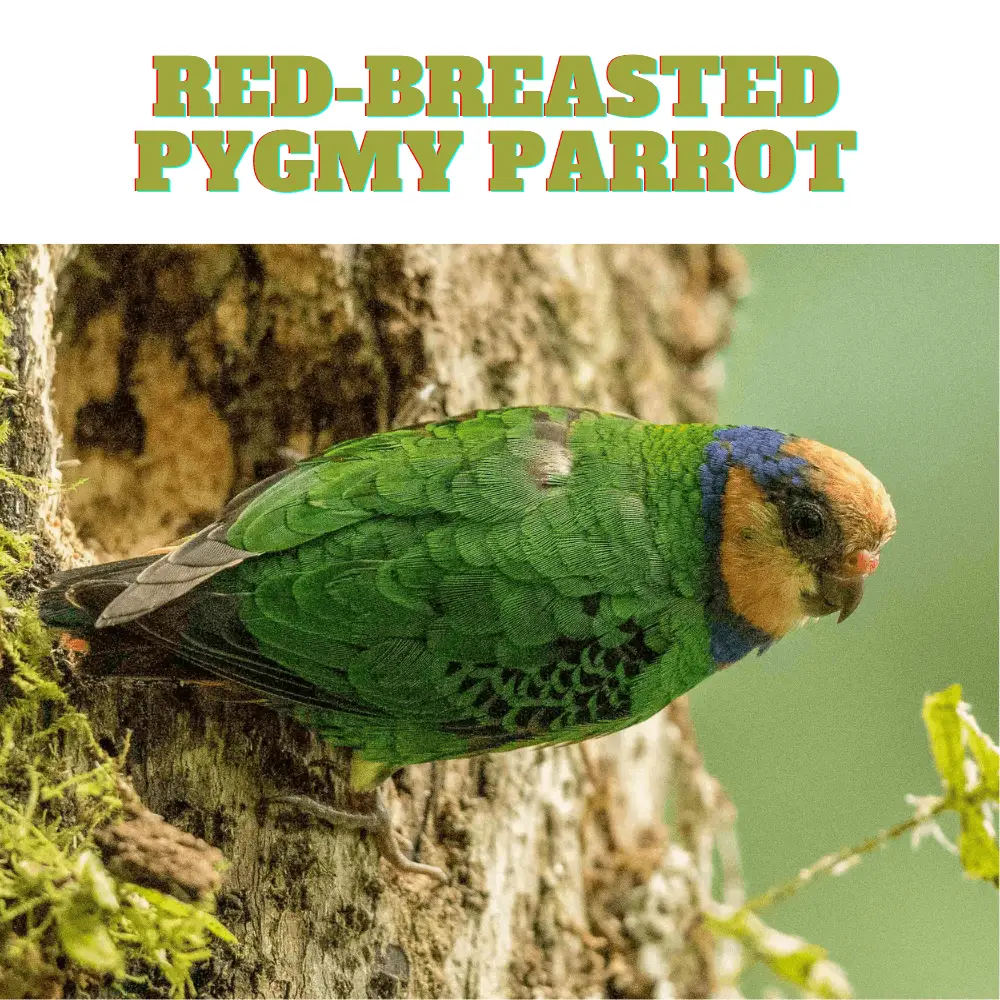
red–breasted pygmy-parrot (Micropsitta bruijnii) 8–9 cm; 12–16 g. Forehead rusty shading to dull blue on the hind crown, nape, sides of the neck, and frontal half-collar;
face yellow shading redder on ear-coverts; breast to under tail coverts orange-red; back and flanks green; wings green with black spotting on median wing-coverts; tail blue centrally, black laterally.
Female has whitish buff forehead and face, blue crown, rest green with yellow underparts. Immature like a female with a whitish forehead and face.
Race pileata claimed to have deeper and more extended rust-red on the crown, although this is not readily apparent on the only skins; necopinata has deep brown crown, yellowish in the center, with red-orange face and yellow under tail coverts; Rosea has crown reddish pink, face pinker than nominate.
Micropsitta bruijnii Scientific name definitions
- LC Least Concern
- Names (15)
- Subspecies (4)
Systematics History
Editor’s Note: This article requires further editing work to merge existing content into the appropriate Subspecies sections. Please bear with us while this update takes place.
Race pileata was known in museums from only three male skins, none of which shows great differences from the range of variation present in the nominate race.
A distinct yellow-crowned form has been noted in the Ok Tedi region of Papua New Guinea. Possible undescribed subspecies in Obi (NC Moluccas). Five subspecies are currently recognized.
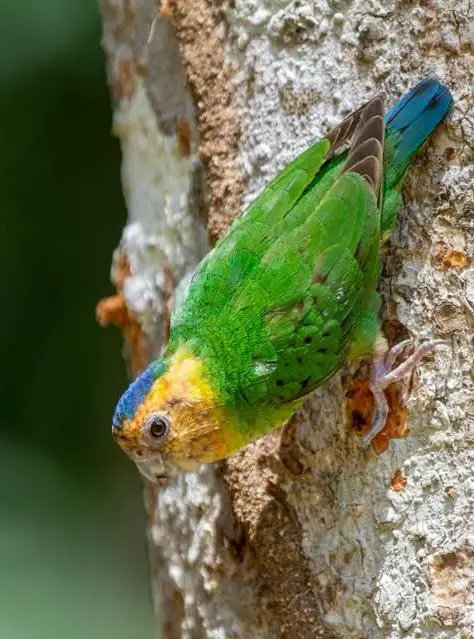
Red-breasted Pygmy-Parrot
Subspecies
Individuals recently recorded in Obi (NC Moluccas) possibly of a new subspecies.
SUBSPECIES
Micropsitta bruijnii pileata Scientific name definitions
Distribution
S Moluccas (Seram and Buru)
SUBSPECIES
Micropsitta bruijnii bruijnii Scientific name definitions
Distribution
mountains of New Guinea from Vogelkop Peninsula in W to the Huon Peninsula and Owen Stanley Range in E.
SUBSPECIES
Micropsitta bruijnii necopinata Scientific name definitions
Distribution
New Britain and New Ireland (Bismarck Archipelago).
SUBSPECIES
Micropsitta bruijnii rosea Scientific name definitions
Distribution
Bougainville, Guadalcanal and Kolambangara (Solomon Is).
Distribution
Editor’s Note: Additional distribution information for this parrot taxon can be found in the ‘Subspecies’ article above. In the future, we will develop a range-wide distribution article.
Habitat
Canopy of dense hill forest at 700 m, cloud forest at 1300 m, moss forest at 2000 m; range generally 500–2300 m although seen in lowlands on Buru;
also forest edge and Albizia shade trees in coffee plantations, occasionally in coffee plantations and riparian growth. Not found in moss forest, Kolombangara, although common in the tall montane forest up to 1300 m.
Movement
Probably nomadic, although in places possibly a regular migrant, e.g. reportedly an annual visitor to lowlands of Buru at the start of the dry season in Oct/Nov; thought nomadic on New Britain.
Diet and Foraging
Red-breasted Pygmy-Parrot Food gleaned methodically from on or under bark in upper branches of trees, sometimes with regular mechanical pecking action, but stomach contents usually indeterminate; fungus, lichen, and moss have been observed being taken;
white paste found in stomachs may be corollas of white-flowered Schefflera, which contain a great deal of nectar. Has been seen feeding on fruit and possibly also flowers and lichen in canopy of Syzygium tree.
Breeding
Dec-Apr. Red-breasted Pygmy-Parrot Nest is a hole in a dead stump or tree, 3–4 m from the ground; one was apparently attended by a male and two females.
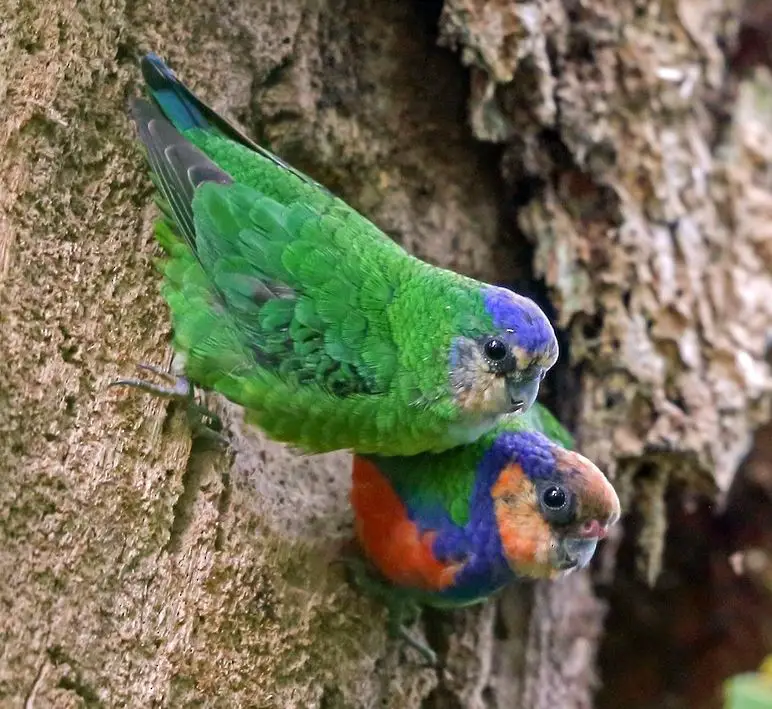
Red-breasted Pygmy-Parrot
Conservation Status
Red-breasted Pygmy-Parrot Conservation status on BirdlifeLC Least Concern
Not globally threatened. CITES II. Usually considered uncommon to rare on Seram and Buru, but easily overlooked.
Widespread but local in New Guinea; undescribed form at Ok Tedi common, with 650 counted flying NE in Nov 1992. Common locally in the Bismarck Archipelago; common on Kolombangara.

